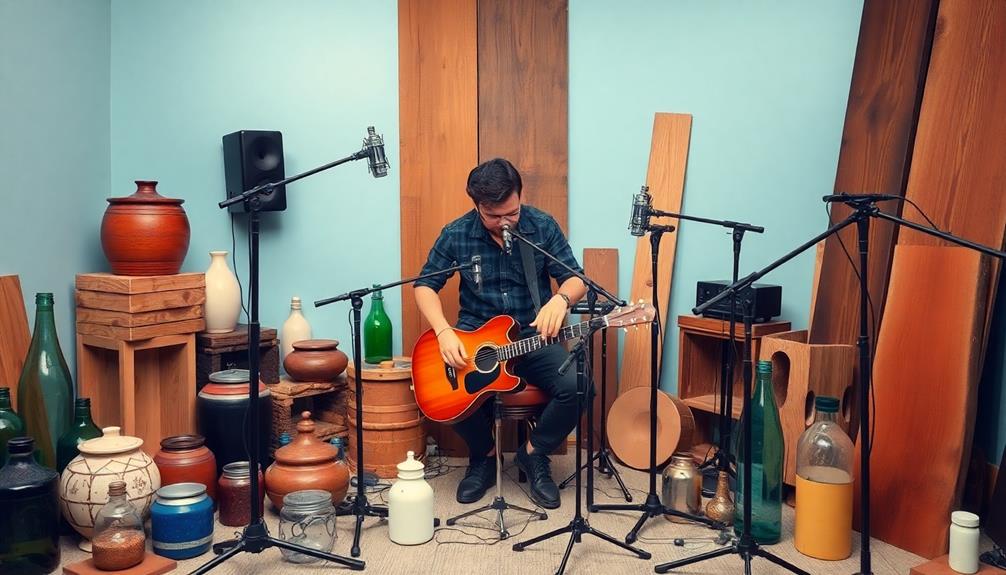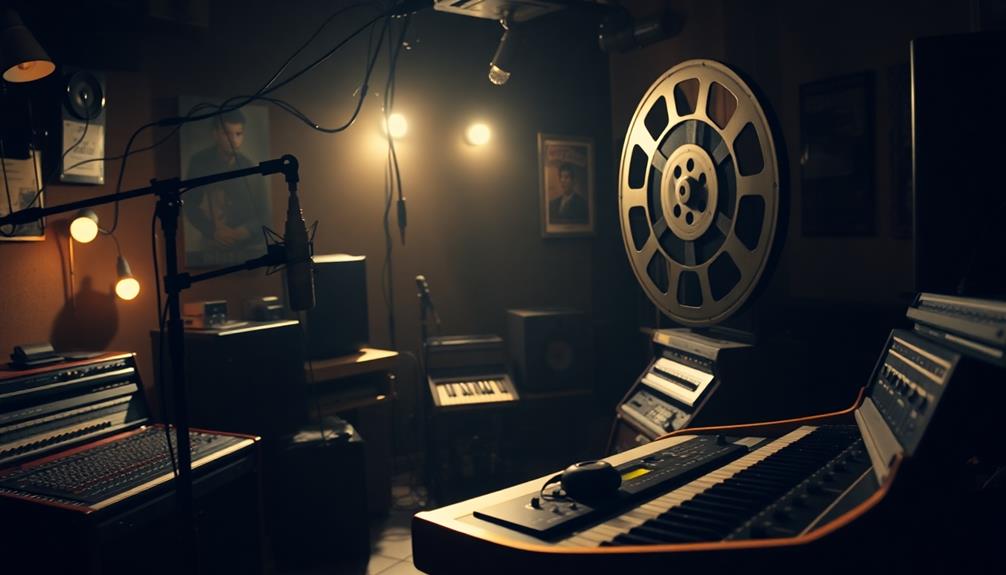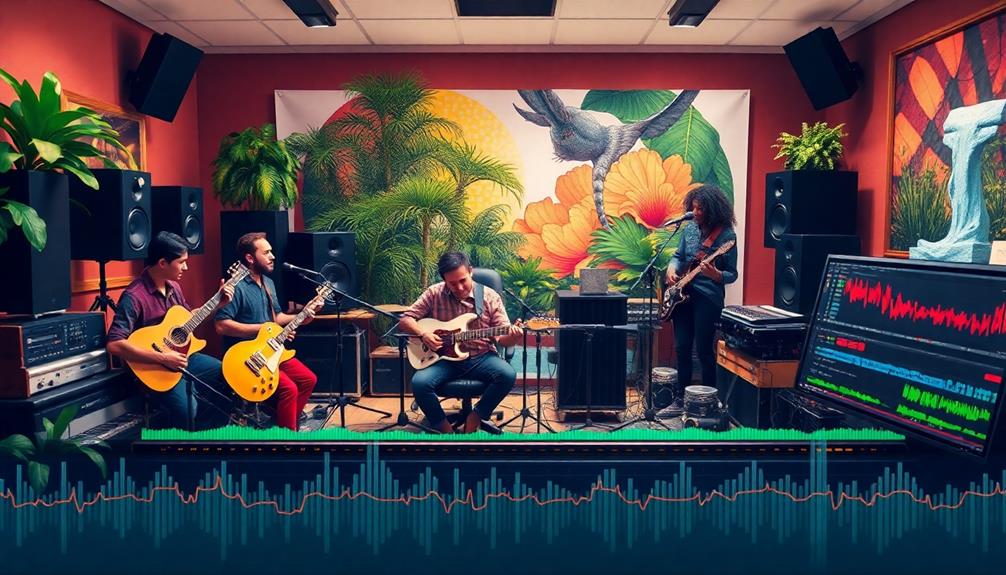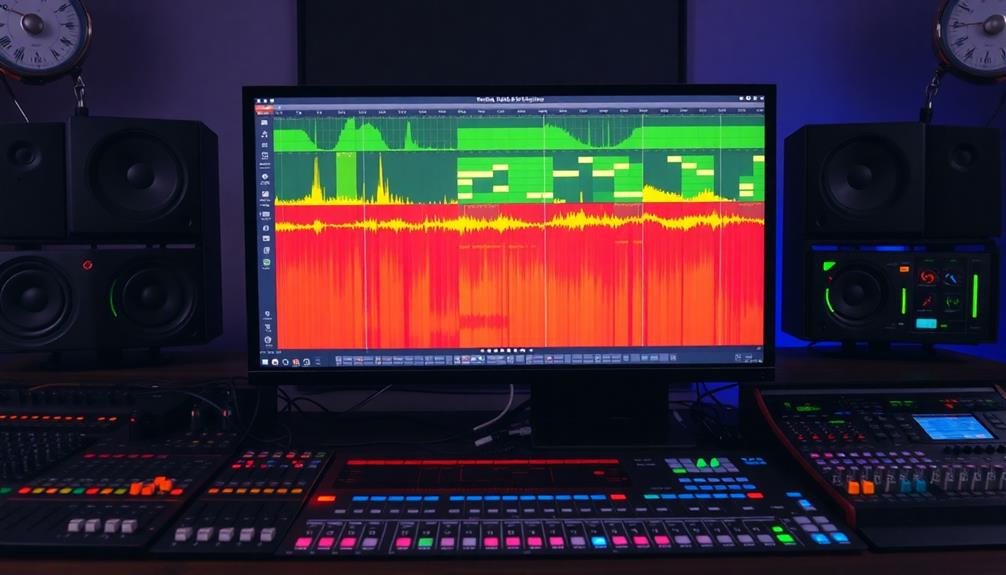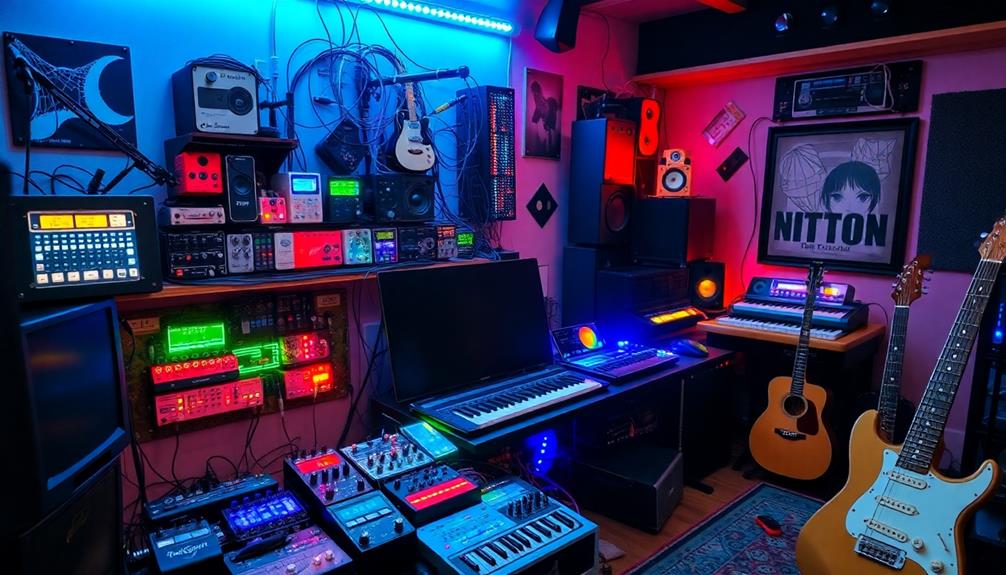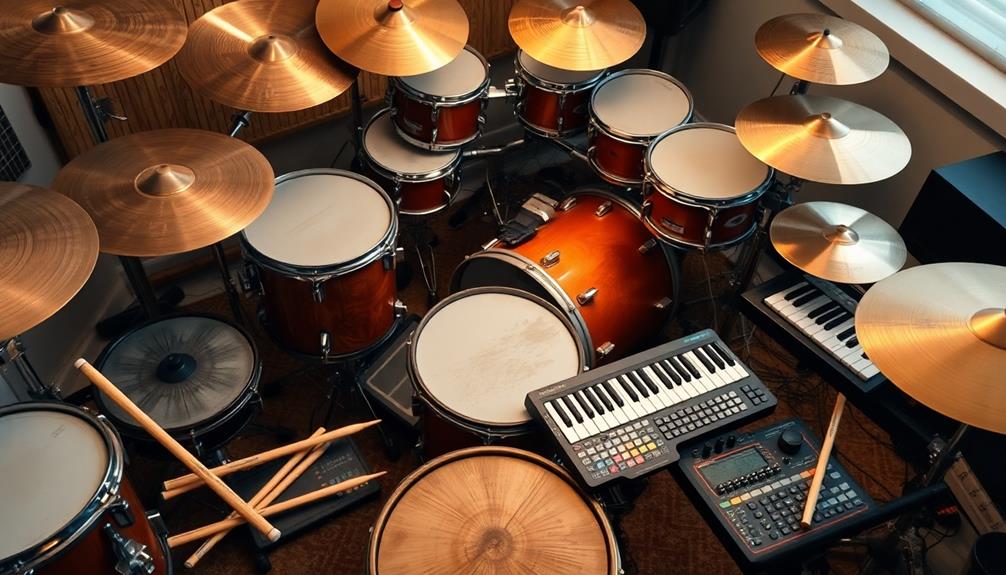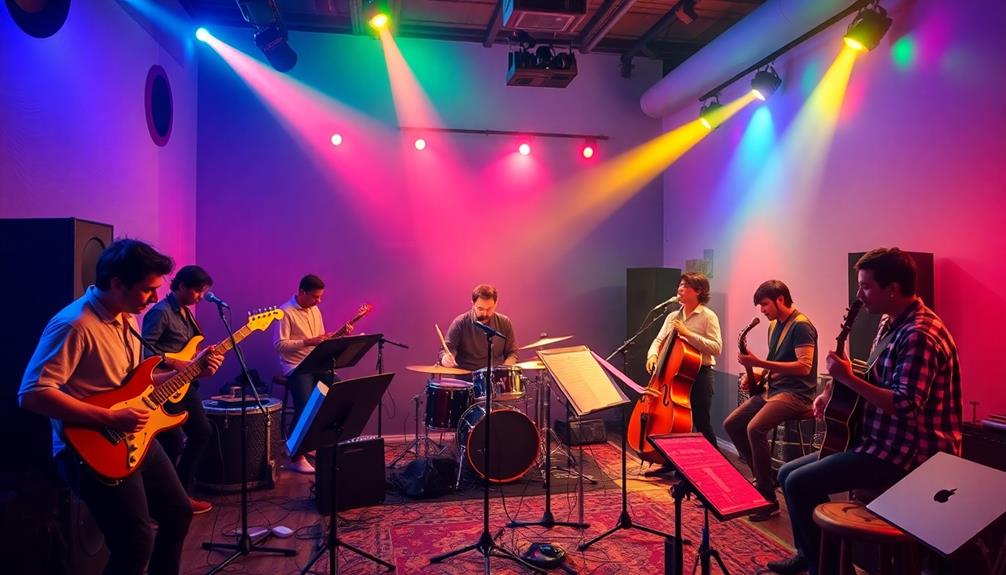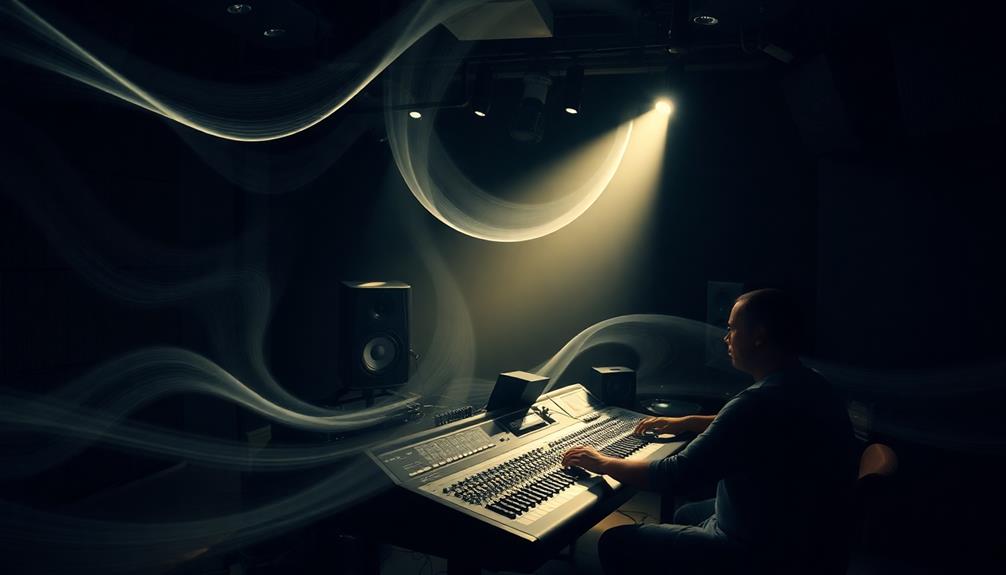Stock plugins are packed with creative potential for producing unique sounds. Start by layering different stock synthesizers to create rich textures and explore modulation effects to add movement. Don't shy away from combining stock tools with unique plugins; this can lead to unexpected results and vibrant layers. Experiment with audio manipulation techniques like parallel processing and reverb for depth. Try tweaking presets and employing unconventional routing methods to push your creativity further. By embracing trial and error, you'll reveal fascinating sounds that keep your audience engaged. There's so much more to discover in exploring these innovative techniques.
Key Takeaways
- Layer multiple stock synthesizers with varied parameters to create rich and intricate soundscapes that offer unique textures.
- Experiment with modulation effects like chorus and flanger to add movement and depth, transforming simple sounds into more engaging experiences.
- Utilize unconventional routing methods, such as side-chaining, to achieve surprising results and dynamic variations in your mixes.
- Combine stock plugins creatively, like blending reverb with distortion, to craft distinctive sonic environments that stand out.
- Explore presets within stock plugins as starting points, then tweak and modify them for innovative sound variations and unique outcomes.
The Impact of Unique Plugins
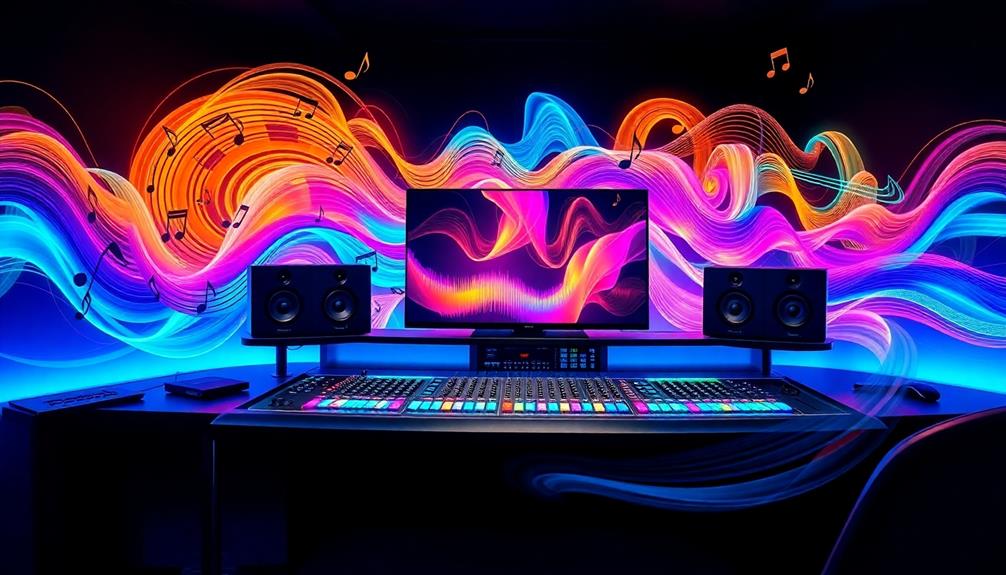
Unique plugins can greatly transform your creative process in music production. By incorporating unique audio plugins into your workflow, you open up a world of sound exploration that's simply unattainable with standard stock options. These plugins are often easy to use, allowing you to manipulate audio in innovative ways effortlessly.
For instance, songs like Blue Skies and Lemonade by Rhythm Failure highlight how unique soundscapes can evoke emotions and memories, showcasing the potential of creative sound design.
Take granular synthesis, for instance. Tools like Portal enable you to create complex soundscapes from simple audio snippets, expanding your sonic palette dramatically.
Or consider glitch plugins such as Stutter Edit and Effectrix, which introduce rhythmic stutters and randomness, sparking fresh compositional ideas. These elements not only enhance your tracks but also inspire you to break out of creative ruts.
When you start experimenting with unconventional sounds, you might find that a single initial concept can blossom into multiple track ideas. The integration of these unique plugins with traditional stock tools adds complexity to your sound design, leading to richer musical experiences.
Embrace the potential of unique audio plugins, and you'll discover that your creative process can be both exciting and rewarding, yielding results you never thought possible.
Exploring Different Plugin Types
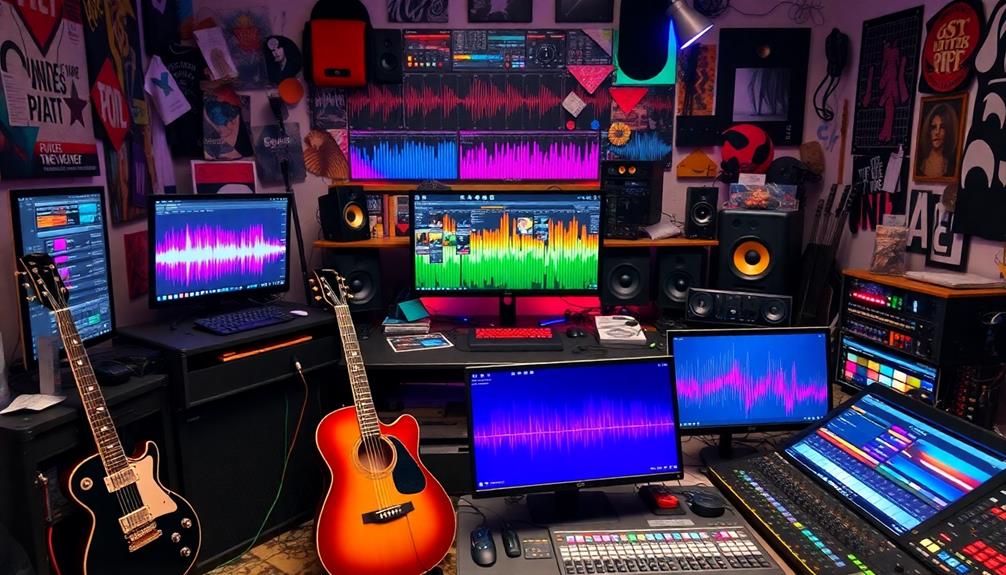
When diving into the world of audio production, you'll find that stock plugins offer a variety of powerful tools to enhance your sound. You'll encounter essential types like EQs, compressors, and reverb, each featuring an intuitive interface that makes them easy to navigate.
By experimenting with built-in effects like distortion or chorus, you can uncover unexpected results that breathe new life into your tracks.
Don't overlook the modulation effects many DAWs provide within their stock offerings. These can add movement and dynamics, giving your sound depth and character.
If you're looking to create something truly unique, try tapping into preset libraries available in stock plugins. They serve as a solid foundation for sound exploration, allowing you to tweak existing sounds into something fresh.
Another creative approach is layering multiple instances of stock synthesizers or samplers. This technique can craft rich, complex soundscapes that push conventional boundaries.
Mixing Stock With Unique Sounds

Mixing stock plugins with unique audio tools can elevate your music to new heights. By combining stock plugins, which provide reliable foundational elements like EQ and compression, with unique plugins, you can create a rich, layered sound. This approach lets you focus unique tools on experimental effects and sound design, enhancing the overall mix.
Experimenting with modulation effects from stock plugins introduces movement and dynamics to your unique sounds. This combination leads to innovative arrangements that capture listeners' attention. Additionally, using stock reverb and delay plugins to process sounds from unique plugins creates a cohesive space in your mix, while still maintaining distinct character.
Blending stock synths with unique plugins, like granular or spectral effects, opens the door to unexpected soundscapes. You'll push the boundaries of traditional sound design, crafting music that stands out.
As you continue learning, consider reaching out to others in the community for tips—an email address can be a valuable resource for connecting with fellow producers. Mixing stock with unique sounds together not only enhances your music but also makes the creative process more enjoyable and fulfilling.
Techniques for Sound Transformation
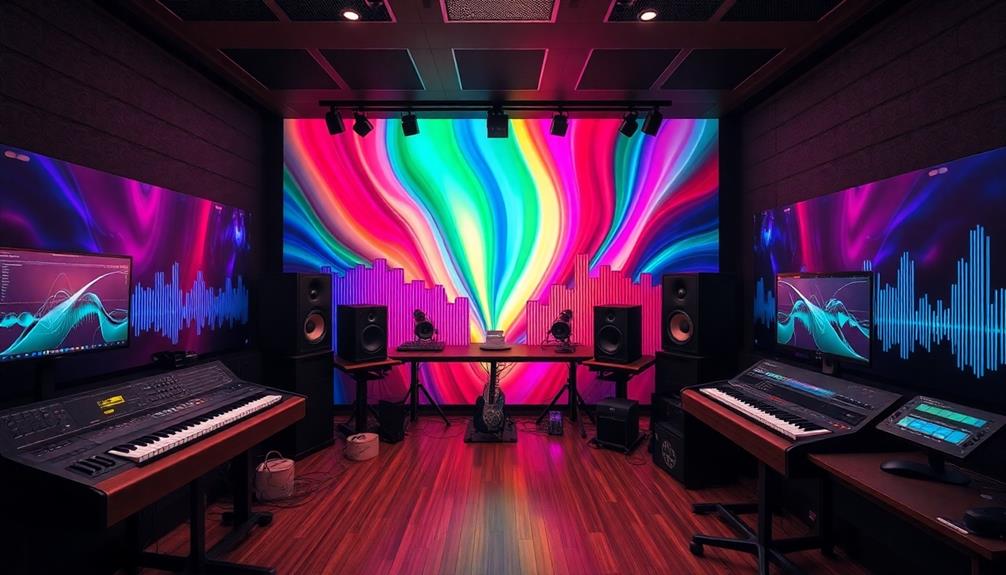
When it comes to sound transformation, layering and blending techniques can elevate your tracks to new heights.
You can also explore creative modulation approaches to turn simple sounds into something dynamic and engaging.
Don't forget to manipulate audio with effects to add depth and character, making your music truly stand out.
Layering and Blending Techniques
Layering and blending techniques can transform your soundscapes into vibrant sonic experiences. By combining multiple stock plugins, you can create a rich, complex sound that showcases a unique sonic palette. Experiment with different frequencies and textures to add depth to your compositions. For instance, try using a reverb plugin on a drum track; this can create a spacious, atmospheric feel that elevates the entire mix.
To achieve clearer layering, utilize EQ settings to carve out specific frequency ranges. This allows each element to shine without masking one another, ensuring that your sounds don't compete for space.
Additionally, consider applying different stock effects through parallel processing. This method enriches the sound while maintaining the original character of the source material.
Don't shy away from experimenting with modulation parameters in your stock plugins. Adding movement and dynamism to static sounds will make your compositions more engaging and alive.
Creative Modulation Approaches
Through creative modulation approaches, you can breathe life into your sound design. By incorporating Low-Frequency Oscillators (LFOs), you can add rhythmic movement to parameters like pitch and filter cutoff, turning static sounds into dynamic textures. Additionally, automating effect parameters lets you craft evolving soundscapes that maintain listener interest.
Experimenting with various modulation sources can lead to unique transformations. For instance, using envelope followers or step sequencers enables you to apply modulation to unconventional parameters, resulting in unexpected sound characteristics. Combining multiple modulation types, such as LFOs and envelopes on the same parameter, further enhances complexity, leading to innovative compositions.
To better illustrate these ideas, here's a brief overview of modulation techniques you can explore:
| Modulation Technique | Description |
|---|---|
| LFOs | Introduces rhythmic variations in sounds. |
| Automation | Creates gradual changes over time. |
| Envelope Followers | Modulates based on audio input dynamics. |
| Step Sequencers | Applies rhythmic patterns to modulation. |
Utilizing modulation routing options in stock plugins allows for real-time manipulation, making your sound design process more expressive and creative.
Manipulating Audio With Effects
Transforming your audio with effects can dramatically reshape its character and presence in a mix. Start by experimenting with reverb and delay to create spaciousness and depth, turning simple sounds into immersive environments. These effects help your tracks breathe, making them feel larger than life.
Next, utilize EQ to sculpt frequencies. By enhancing or diminishing specific tonal qualities, you can alter the character of your sound, ensuring each element sits perfectly in the mix.
Modulation effects like chorus and flanger introduce movement and richness, adding complex textures to otherwise basic audio sources.
Don't overlook distortion or saturation plugins, as they can infuse warmth and harmonic richness into clean signals, giving your tracks a gritty or vintage vibe. This adds an organic feel that often elevates your production.
Enhancing Creativity Through Experimentation
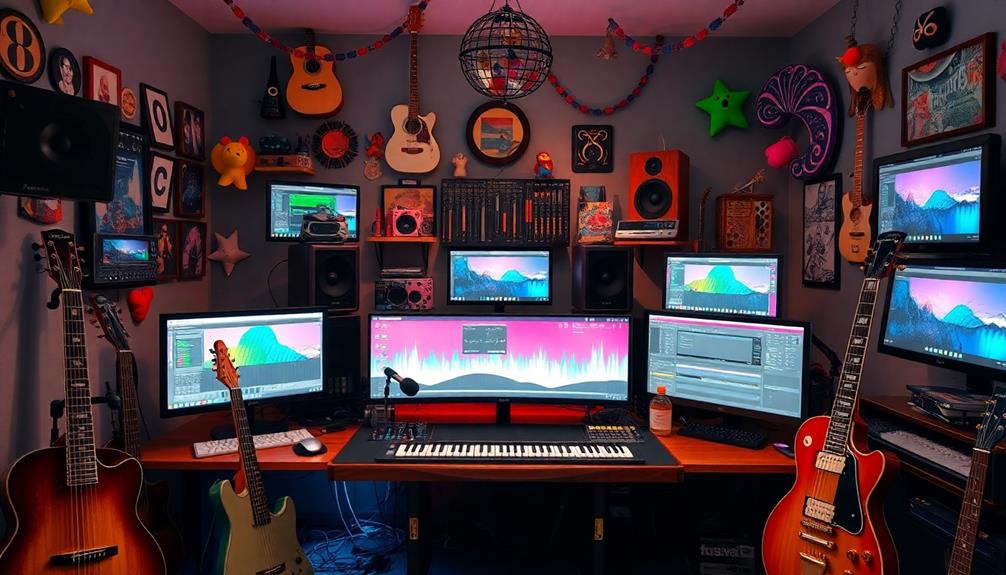
Experimenting with stock plugins opens up a world of unconventional sound exploration that can transform your music.
By layering effects, like reverb and modulation, you can create rich, immersive soundscapes that add depth and movement.
Don't hesitate to tweak presets and try out different routing methods to uncover unique textures and rhythms that elevate your creativity.
Unconventional Sound Exploration
Creativity often flourishes in the unexpected, and that's exactly where unconventional sound exploration comes into play. By experimenting with stock plugins, you can discover new sonic landscapes that push your creativity further.
For instance, try manipulating a reverb plugin to create rhythmic pulses instead of relying on traditional decay effects. This approach can turn a standard sound into something fresh and thrilling.
Utilizing modulation within stock plugins can also introduce dynamic elements to your sounds. By employing LFOs or envelope followers, you can add movement and variation, transforming static audio into enchanting textures.
Consider these techniques for your unconventional sound exploration:
- Combine multiple stock plugins: Use them in parallel or series to create intricate sound combinations that wouldn't be achievable with a single plugin.
- Experiment with signal routing: Techniques like side-chaining or creatively using send effects can yield surprising results, inspiring new compositional ideas.
- Explore presets as a starting point: Tweak existing sounds to spark creativity and discover innovative variations that lead you down new musical paths.
Dive into this exploration, and you'll uncover unique sounds that elevate your music.
Layering Techniques for Depth
Building on your exploration of unconventional sounds, layering techniques can greatly enhance the depth and richness of your compositions. By blending different stock plugins, you can create complex textures that elevate your sonic landscape. Start by layering multiple instances of stock synths, tweaking parameters like oscillator settings and filter types for each layer to achieve unique timbres. Incorporating visual representation in music can provide further inspiration as you design your sound world.
Utilizing stock reverb and delay plugins together can help you craft spacious soundscapes, adding an atmospheric quality to your tracks. Don't shy away from incorporating modulation effects such as phasers or chorus across your layered sounds. This introduces movement and variation, keeping your listeners engaged throughout the piece.
To further refine your layers, consider combining stock plugins with distinct processing chains. Techniques like parallel compression and EQ adjustments can greatly enhance clarity and impact in your mix.
As you experiment with these layering strategies, you'll discover how they contribute to a richer auditory experience, inviting your audience into a more immersive sound world. Remember, experimentation is key—let your creativity guide you as you explore the depths of sound design!
User Experience in Sound Design
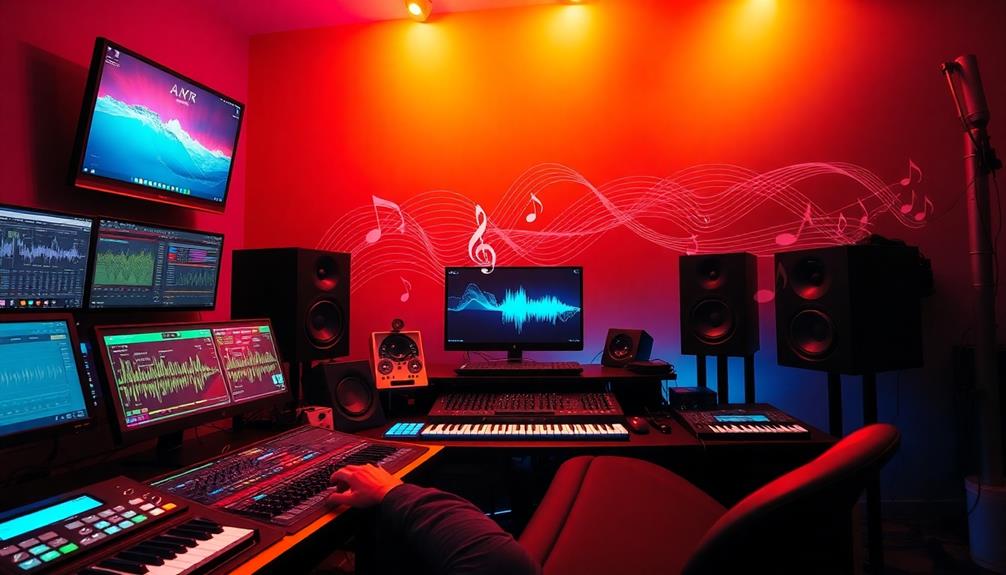
While diving into sound design, the user experience offered by stock plugins can make all the difference in your creative journey. Intuitive interfaces are vital, allowing you to explore sound design without feeling overwhelmed by complex technical details.
A well-organized visual layout can greatly enhance your engagement, making the process smoother and more enjoyable.
Here are some key aspects to take into account:
- Randomization Features: These allow you to experiment with unique sounds and inspire innovation, breaking you out of creative ruts.
- Accessibility of Features: A well-designed interface shortens the learning curve, enabling you to grasp and utilize tools more quickly, which is especially beneficial for beginners.
- Community Feedback: Actively engaging with user communities can provide insights into plugin improvements, ensuring you're using the most effective tools available.
Future Trends in Audio Plugins
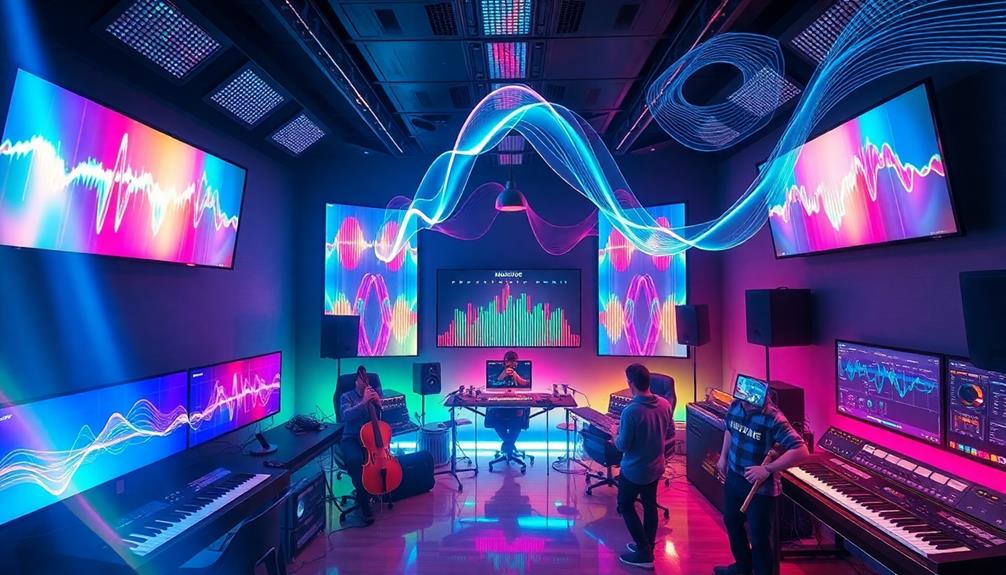
The future of audio plugins is shaping up to be an exciting landscape, driven by technological advancements and user demands.
You'll likely see a significant rise in AI and machine learning integration, making sound design more intuitive and enhancing your creative process. With these advancements, you can expect plugins that help you craft unique sounds effortlessly.
As a sound designer, you'll appreciate the growing demand for customizable tools. More vendors are adopting open-source principles for their sample libraries, giving you the flexibility to manipulate sounds as you see fit.
Modular environments are also gaining popularity, allowing you to adapt and configure setups for endless possibilities.
Additionally, you'll notice a shift towards user-friendly interfaces that reduce the technical complexities typically associated with advanced plugins.
This focus encourages experimentation and creativity, making sound design more accessible.
Frequently Asked Questions
Do Professionals Use Stock Plugins?
Yes, professionals definitely use stock plugins. They appreciate the high-quality sounds and effects available in major DAWs, often customizing and layering them to create unique textures, proving creativity thrives even with built-in tools.
Can You Get a Professional Mix With Stock Plugins?
You can absolutely get a professional mix with stock plugins—"a craftsman is only as good as his tools." By mastering these tools, you'll discover their potential and create polished, impressive mixes that rival any premium setup.
Can You Master With Stock Plugins?
Yes, you can absolutely master with stock plugins. They offer essential tools like equalizers and compressors, allowing you to achieve a polished sound. Plus, they integrate seamlessly with your DAW for an efficient workflow.
Are Stock Plugins Enough?
Stock plugins can be enough for many projects, especially when you explore their features fully. They offer essential tools and effects, allowing you to create quality sounds without needing to invest in additional third-party options.
Conclusion
Incorporating stock plugins into your sound design can lead to surprisingly unique results, especially when you mix them creatively. Did you know that 70% of music producers believe experimentation with plugins greatly enhances their creativity? By exploring different types and techniques, you can transform ordinary sounds into something extraordinary. So, don't shy away from your stock plugins—embrace them, experiment, and watch your soundscape evolve into something truly distinctive. Your next great sound might just be a plugin away!


